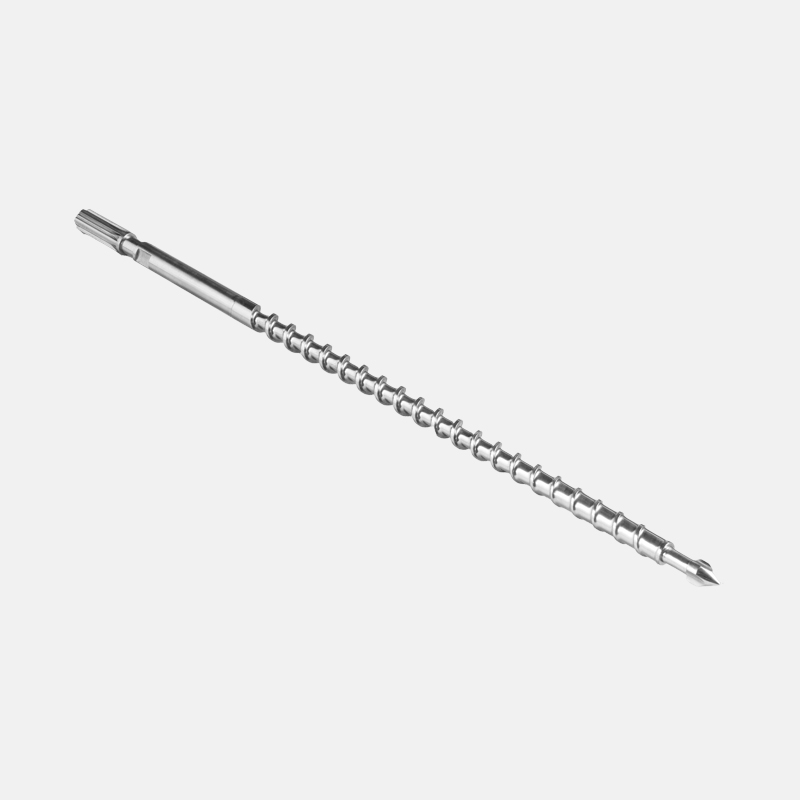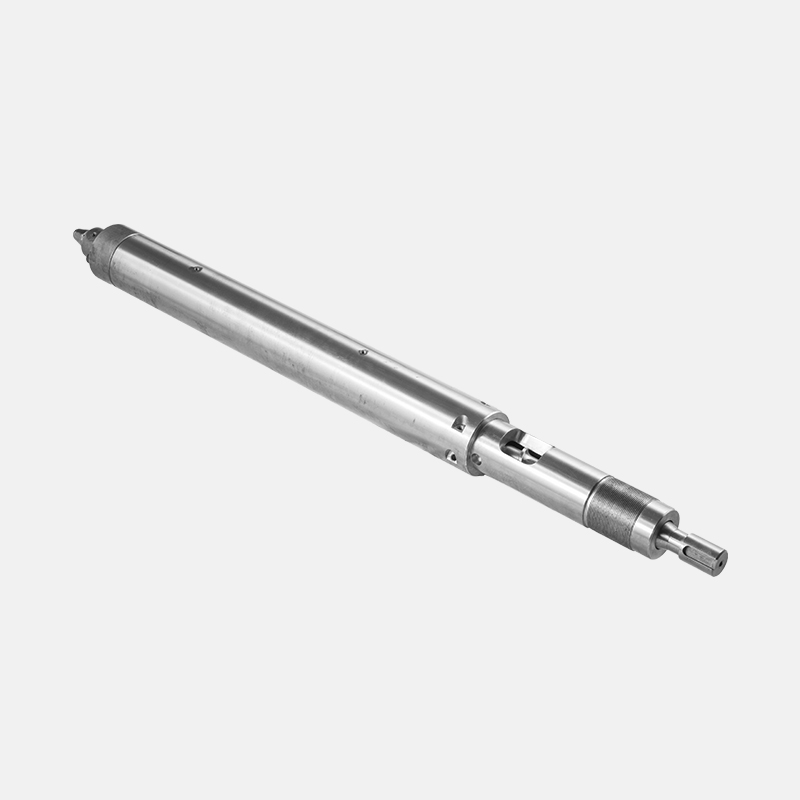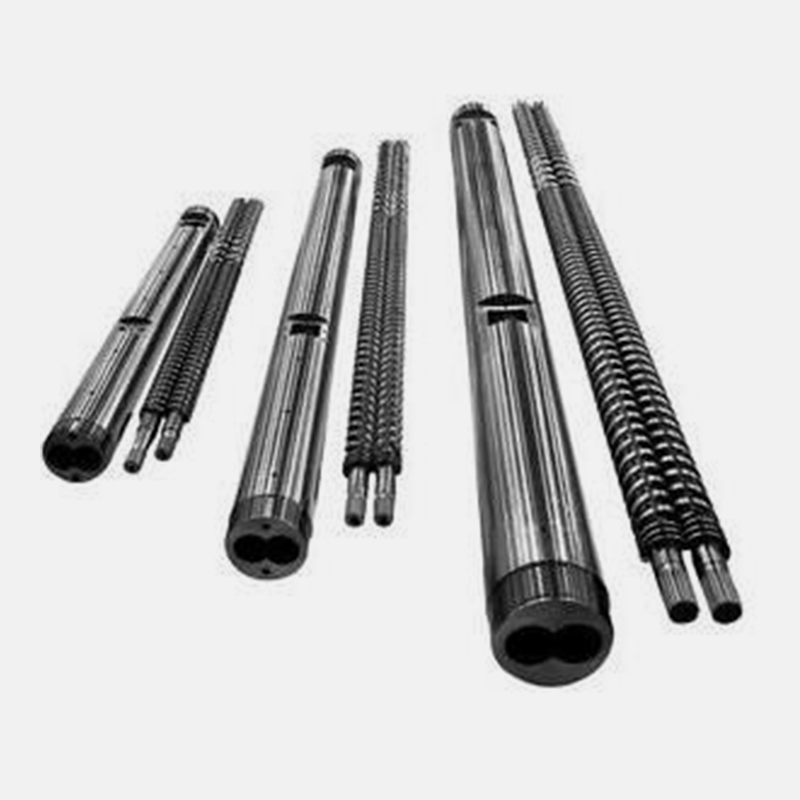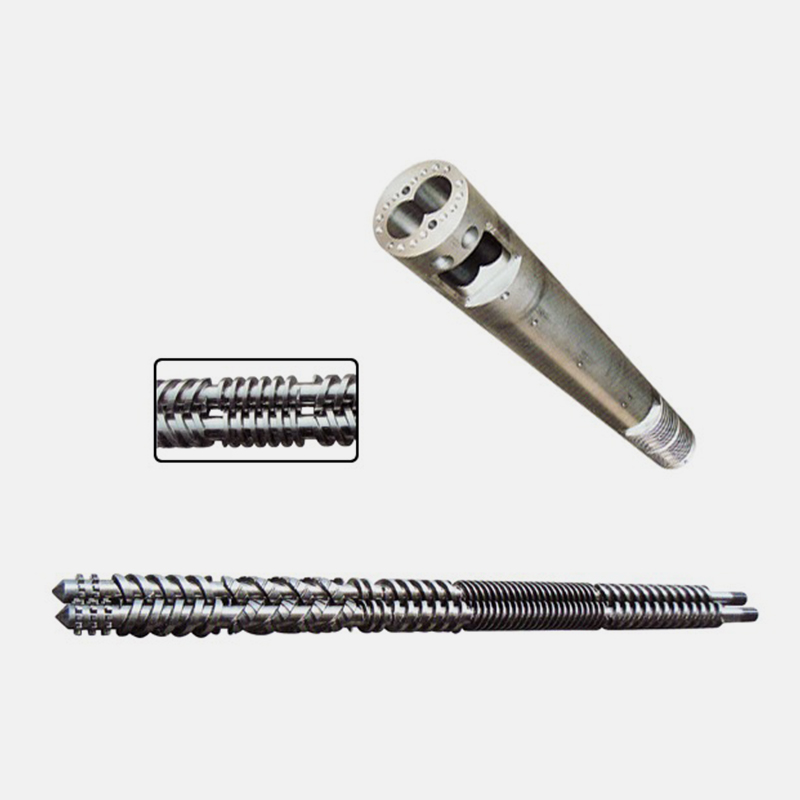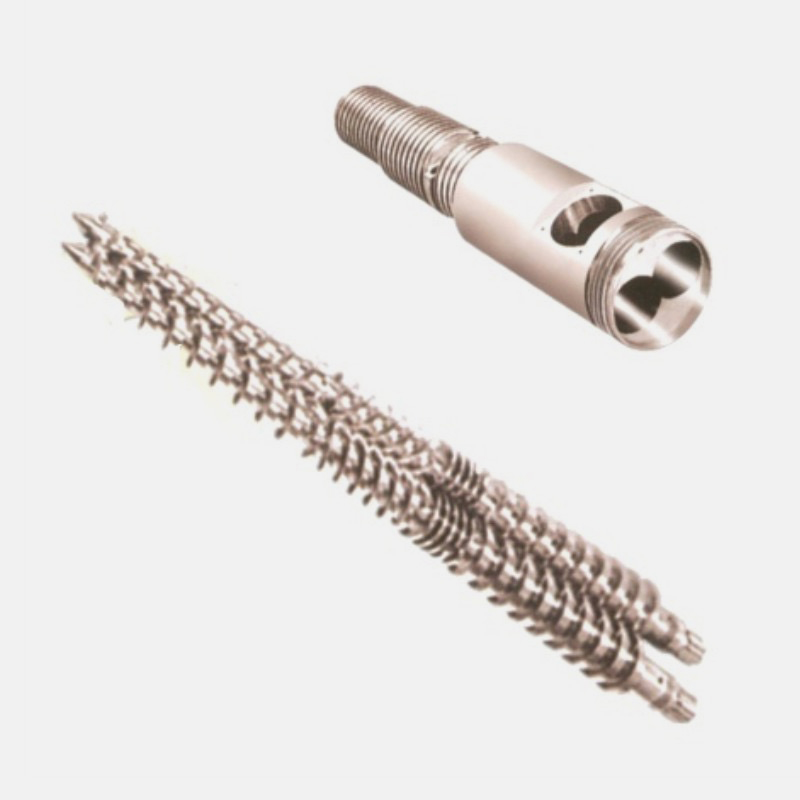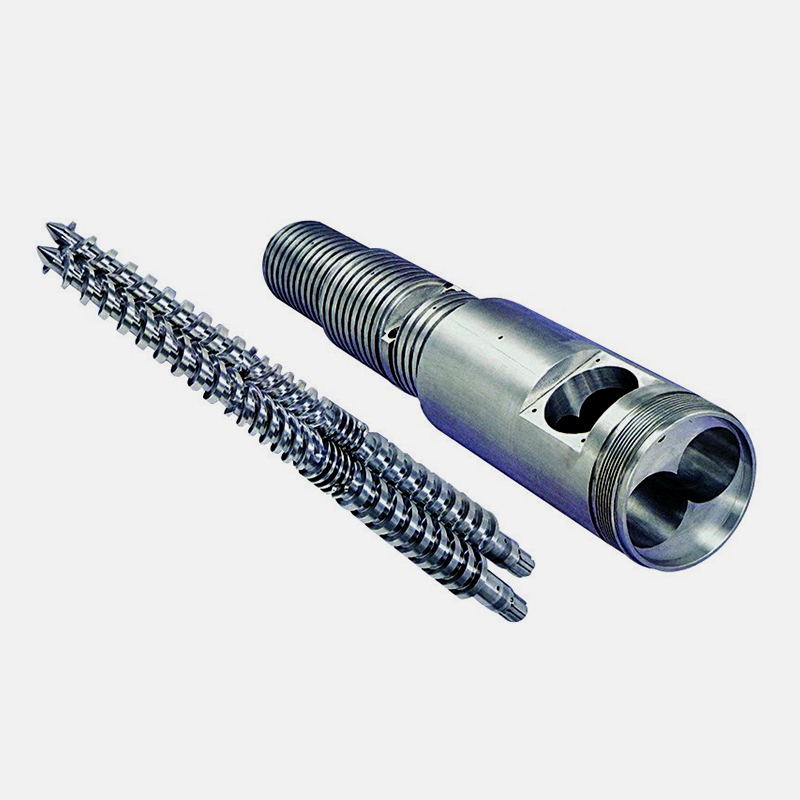The
extruder screw barrel is a fundamental component of extrusion processes, playing a critical role in the conversion of raw polymer materials into a wide array of plastic products. The efficiency of an extruder largely depends on the design and performance of its screw barrel assembly.An extruder screw barrel consists of two main parts—the screw and the barrel. The screw is a helical, rotating element responsible for conveying, melting, mixing, and pressurizing the polymer material. The barrel, on the other hand, serves as the housing for the screw, providing the necessary support and creating a sealed chamber for the melt. The interaction between the screw and the barrel directly influences the polymer's behavior, melt homogeneity, and final product properties.
1. Flight Design and Mixing Efficiency:The flight design of the screw significantly impacts the mixing efficiency during the extrusion process. The type and arrangement of screw flights affect how well the polymer materials are mixed and distributed within the barrel. Various flight configurations, such as single-flighted, double-flighted, and barrier screws, offer different mixing capabilities.A well-designed screw with appropriate flight geometry can achieve better distributive and dispersive mixing, resulting in a more uniform melt with consistent properties. Efficient mixing helps disperse additives, fillers, and reinforcements evenly throughout the polymer matrix, enhancing the final product's strength, appearance, and other critical characteristics.
2. Compression Ratio and Melt Pressure:The compression ratio of the screw barrel refers to the ratio of the channel depth at the feed section to the channel depth at the metering section. This parameter governs the pressure build-up inside the extruder and has a direct influence on the melt temperature and viscosity.An optimized compression ratio ensures sufficient melting and compaction of the polymer material, reducing the likelihood of unmelted particles and air entrapment. This leads to a smoother, more homogenous melt, thereby improving the product's surface finish and reducing defects like voids or air bubbles.
3. Material and Wear Resistance:Selecting appropriate materials for the extruder screw barrel is essential to ensure longevity and sustained performance. The barrel and screw are subjected to high temperatures, mechanical stresses, and abrasive wear during operation. Consequently, they should be made from materials with excellent heat resistance, mechanical strength, and wear resistance.Common materials used for extruder screw barrels include high-quality steels, bimetallic compositions, and nitrided or coated surfaces. Employing wear-resistant materials reduces the need for frequent replacements, minimizing downtime and maintenance costs.
4. Length to Diameter (L/D) Ratio:The L/D ratio of the extruder screw barrel refers to the length of the screw divided by its diameter. It determines the residence time of the polymer material inside the extruder, affecting the melting efficiency and overall throughput.A higher L/D ratio allows for a longer melting and mixing time, which can be advantageous for certain polymers or specific processes that require prolonged residence time for optimal processing. On the other hand, a shorter L/D ratio may be preferred for faster processing of materials with shorter thermal degradation times.
The extruder screw barrel is the backbone of efficient polymer extrusion processes. Its design and performance play a pivotal role in determining polymer melt quality, mixing efficiency, and product characteristics. By understanding the critical aspects of screw flight design, compression ratio, material selection, and L/D ratio, manufacturers can optimize their extrusion processes to achieve higher productivity, consistent product quality, and cost-effectiveness. Moreover, ongoing research and advancements in screw barrel technology continue to drive innovation, further enhancing the capabilities of extrusion processes and expanding their applications in the plastics industry.
Extruder screw barrel for PVC plastic machine
Material: 38CrMoAlA, 42CrMo(JIS SCM440), SKD11,61
Diameter: Φ15mm-350mm
Application: Suit for cable , sheet , pipe , profile
Nitride Case Depth: 0.5mm-0.8mm
Nitride Hardness: 1000-1100HV
Nitride Brittleness: ≤Grade One
Surface Roughness: Ra0.4um
Screw Straightness: 0.015mm
Alloy Hardness: HRC68-72
Designing: Screw structure and compression ratio can be designed according to different products & different output re quirement.
For what plastic machine: extruder/extrusion machine

 English
English 简体中文
简体中文 España
España عربى
عربى
